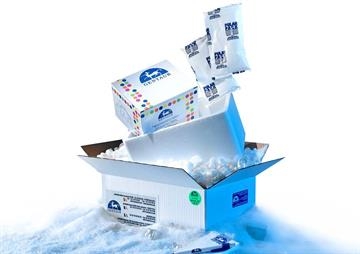- Categories
- Specials and Offers
- Custom Services
- Products
AvaI -HC unit: 330, High Concentration


AvaI -HC unit: 330, High Concentration
Ask for quotation
On request
quantity
product details
Catalog number: 377 - YRAVA1-HC
Product Category: Business & Industrial > Science & Laboratory
Yeastern BiotechGentaur
Size: 1 vial
Related Products
K146
saCas9 Null Mutant Protein (High Concentration)
The Clustered Regularly Interspaced Short Palindromic Repeats (CRISPR)/Cas9 system is the latest RNA-guided, endonuclease tool in genome editing which allows for very specific genomic disruption and replacement. ;;The saCas9 Null Mutant Protein is created by mutating both cleavage domains of the wild type saCas9. Such a saCas9 protein retains its ability to bind to genomic DNA through sgRNA:genomic DNA base pairing, however, the saCas9 Null Mutant does not induce cleavage. Therefore, this protein can provide a useful negative control for CRISPR experiments. In addition, binding of the Null Mutant can act as a roadblock to hinder transcription, thus offering a useful tool to achieve reversible knock-down of gene expression.;;The Cas9 nuclease from the bacteria <i>Staphylococcus aureus</i>, abbreviated saCas9, is gaining popularity as an alternative to spCas9 due to its relatively smaller size. The saCas9 PAM sequence is 5’-NNGRRN (preferably 5’-NNGRRT).
351.99 €
K088
asCpf1 Nuclease NLS Protein (High Concentration)
Using Cpf1 (a.k.a. Cas12a) in your CRISPR experiment offers several advantages over other CRISPR-associated nucleases.;<ul><li>Due to the T-rich PAM sequence (TTTN), Cpf1 enables editing in regions unable to be targeted by Cas9. </li><li>Cpf1 can be used with a shorter guide RNA (called crRNA) than Cas9. </li><li>Cpf1 creates a staggered cut in dsDNA instead of a blunt cut. </li><li>Cpf1 cuts distal to the PAM sequence, which may allow for multiple rounds of cleavage. </li><ul>asCpf1 is from the bacteria <i>Acidaminococcus</i>. This protein contains a SV40 T antigen nuclear localization signal (NLS) on the N-terminus of the protein. If the cut caused by asCpf1 is repaired by non-homologous end joining (NHEJ), an indel may be formed that disrupts the open reading frame of the targeted gene, leading to gene knockout. Alternatively, by supplying a repair template, a sequence can be knocked in at the cleavage site via homology directed repair (HDR).
382.29 €
K089
saCas9 Nuclease NLS Protein (High Concentration)
The Clustered Regularly Interspaced Short Palindromic Repeats (CRISPR)/Cas9 system is the latest RNA-guided endonuclease tool in genome editing which allows for very specific genomic disruption and replacement. ;;The Cas9 nuclease serves to unwind the genomic DNA duplex next to conserved protospacer adjacent motifs (PAMs) and homes in on its target sequence, which is recognized by a complementary single-guide RNA. The resulting double-stranded break gets repaired by the non-homologous end joining (NHEJ) pathway, leading to a disruption in the open reading frame of the targeted gene. Alternatively, by supplying a suitable repair template, virtually any desired point mutation can be introduced at the break point via homology-directed repair (HDR).;;The Cas9 nuclease from the bacteria <i>Staphylococcus aureus</i>, abbreviated saCas9, is gaining popularity as an alternative to spCas9 due to its relatively smaller size. The saCas9 PAM sequence is 5’-NNGRRN (preferably 5’-NNGRRT). saCas9 Nuclease NLS contains a SV40 T antigen nuclear localization sequence (NLS) on the C-terminus of the protein.









